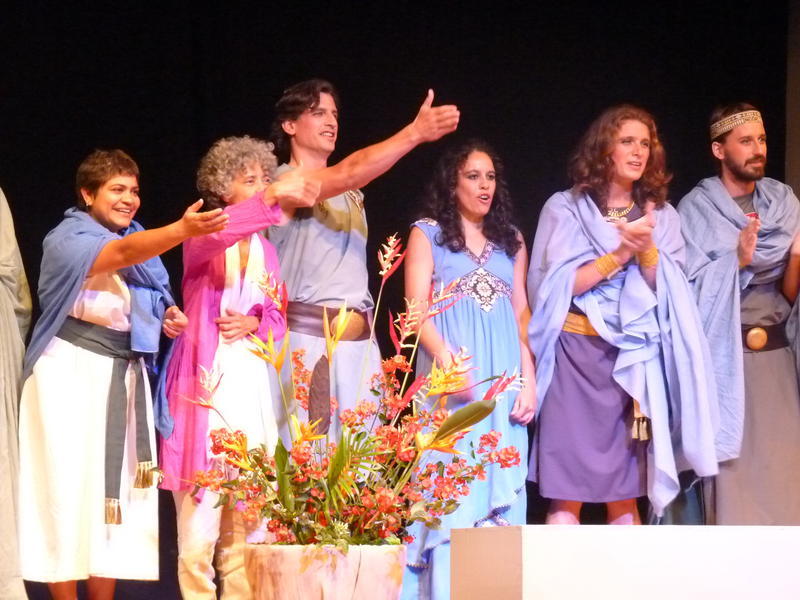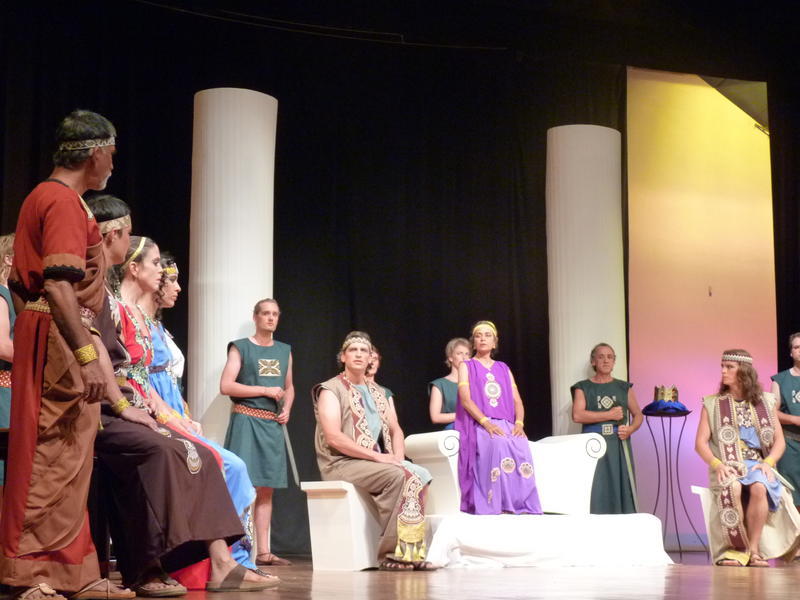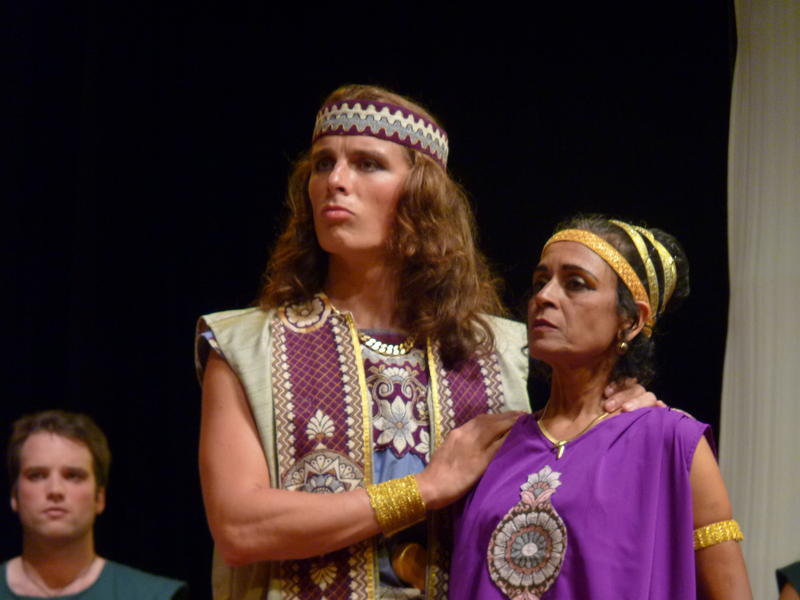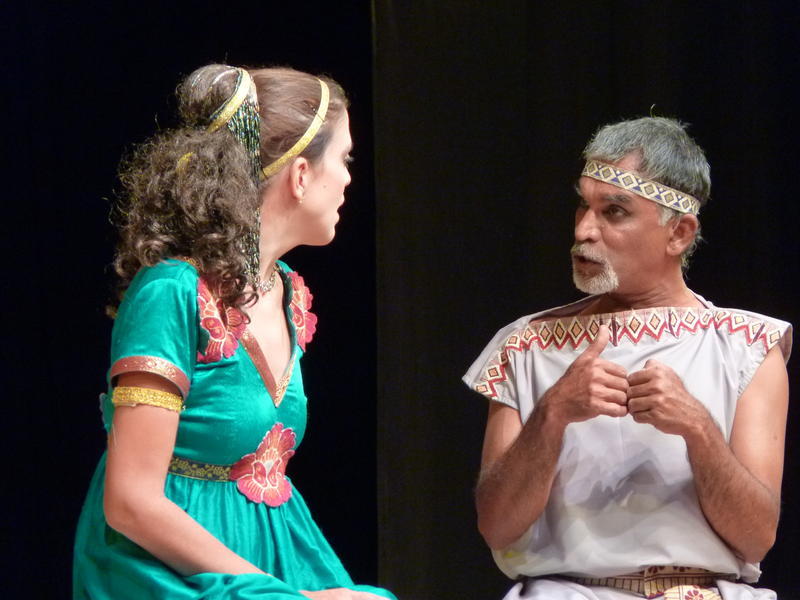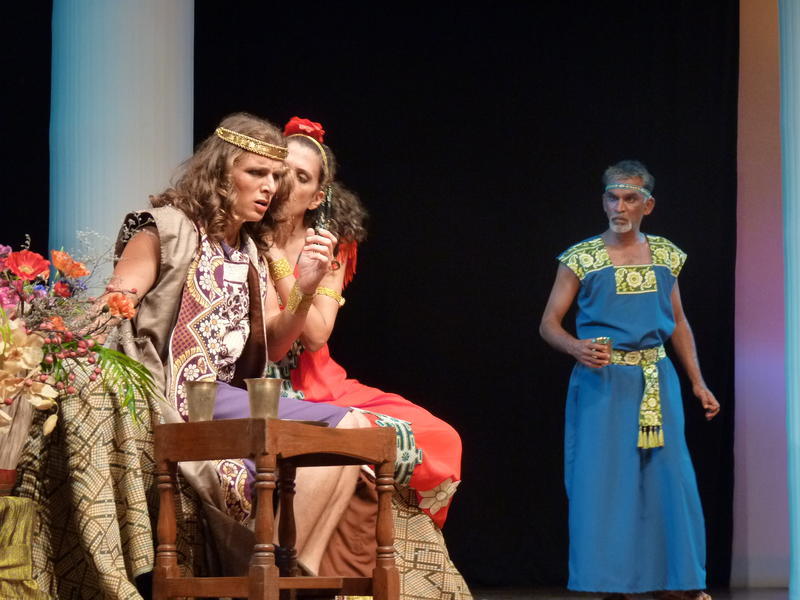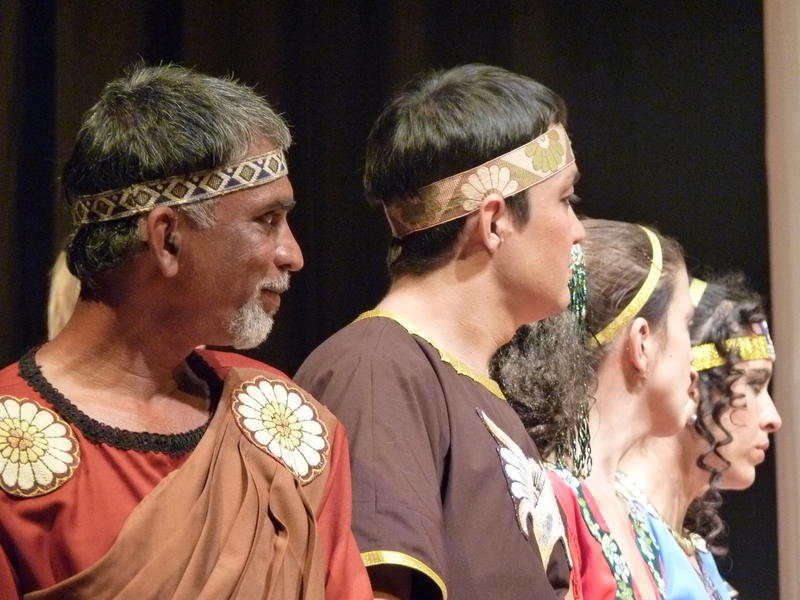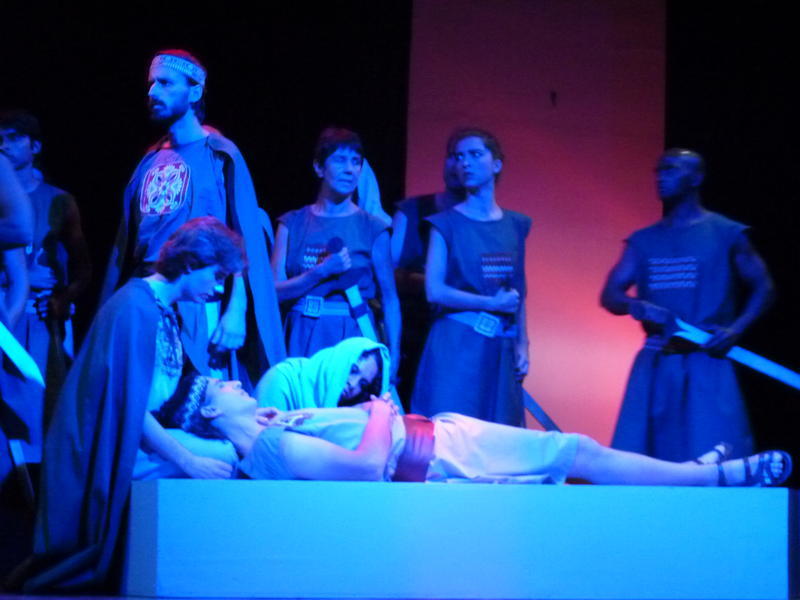Rodogune
This play in 5 Acts is located in Syria of the playwrights imagination. Rodogune, the Parthian Princess captured by Syria and made attendant of queen Cleopatra. Antiochus and Timocles, the sons of Cleopatra by her first husband, have been brought up in Egypt. At the death of Cleopatras second husband, they return to Syria. The selfish queen mistakes fulsome flattery for real love and rejects Antiochus. He revolts to claim the throne of Syria; and both Rodogune and Antiochus who are mutually attracted by love, join together in this venture….
The actors are: Queen – Joy
‘ ‘ ‘ ‘ ‘ ‘ ‘ ‘ ‘ ‘ ‘ Antiochus – Thomas
‘ ‘ ‘ ‘ ‘ ‘ ‘ ‘ ‘ ‘ ‘ Timocles – Michael
‘ ‘ ‘ ‘ ‘ ‘ ‘ ‘ ‘ ‘ ‘ Rodogune – Anandamay
‘ ‘ ‘ ‘ ‘ ‘ ‘ ‘ ‘ ‘ ‘ Phayllus – Charu
‘ ‘ ‘ ‘ ‘ ‘ ‘ ‘ ‘ ‘ ‘ Philoctetes – Emanuelle
‘ ‘ ‘ ‘ ‘ ‘ ‘ ‘ ‘ ‘ ‘ Eunice – Shakti
‘ ‘ ‘ ‘ ‘ ‘ ‘ ‘ ‘ ‘ ‘ Cleone – Elke
‘ ‘ ‘ ‘ ‘ ‘ ‘ ‘ ‘ ‘ ‘ Thoas – Gandhi
‘ ‘ ‘ ‘ ‘ ‘ ‘ ‘ ‘ ‘ ‘ Nicanor – Ruslan
‘ ‘ ‘ ‘ ‘ ‘ ‘ ‘ ‘ ‘ ‘ Eremite – Veronique
‘ ‘ ‘ ‘ ‘ ‘ ‘ ‘ ‘ ‘ ‘ Mentho – Anita
‘ ‘ ‘ ‘ ‘ ‘ ‘ ‘ ‘ ‘ ‘ Leosthenes – Clément
‘ ‘ ‘ ‘ ‘ ‘ ‘ ‘ ‘ ‘ ‘ Melitus – Dyuman
‘ ‘ ‘ ‘ ‘ ‘ ‘ ‘ ‘ ‘ ‘ Theras – Rori
Two complete, independent versions of this play exist. Sri Aurobindo wrote the first one in Baroda between 31 January and 14 February 1906, on the eve of his departure from the state to join the national movement. In May 1908 the notebooks containing his fair copy of Rodogune, like the notebook containing The Viziers of Bassora, were seized by the police when Sri Aurobindo was arrested. Fortunately, other notebooks remaining in his possession contained much of the penultimate draft of the 1906 version. Basing himself on these passages, he was able to reconstruct the play in Pondicherry around 1912. This version was published in the Sri Aurobindo Mandir Annual and separately in 1958. It supersedes the Baroda version, which was recovered in 1952. The plot of Rodogune derives ultimately from the history of Cleopatra, Queen of Syria, as recounted by such classical historians as Appian, Justin and Josephus. The immediate source probably was Rodogune (1645), by the French dramatist Pierre Corneille. Persons of the Drama ANTIOCHUS TIMOCLES Htwin-brothers, Princes of Syria, sons of Nicanor and Cleopatra. NICANOR, of the royal house, general-in-chief of the Syrian armies. THOAS LEOSTHENES HGreek nobles of the Kingdom of Syria, generals of its armies. PHAYLLUS, an official, afterwards Minister of Timocles. PHILOCTETES, a young Greek noble of Egypt, friend of Antiochus. MELITUS, a Court official. CALLICRATES, a young Greek noble of Syria. THERAS, a gentleman in waiting. AN EREMITE. CLEOPATRA, an Egyptian princess, sister of the reigning Ptolemy, Queen of Syria; widow successively of King Nicanor and his brother Antiochus. RODOGUNE, a princess of Parthia, prisoner in Antioch. EUNICE, daughter of Nicanor. CLEONE, sister of Phayllus, in attendance on the Queen. MENTHO, an Egyptian woman, nurse of Antiochus. ZOLA, an attendant of Cleopatra.
‘

